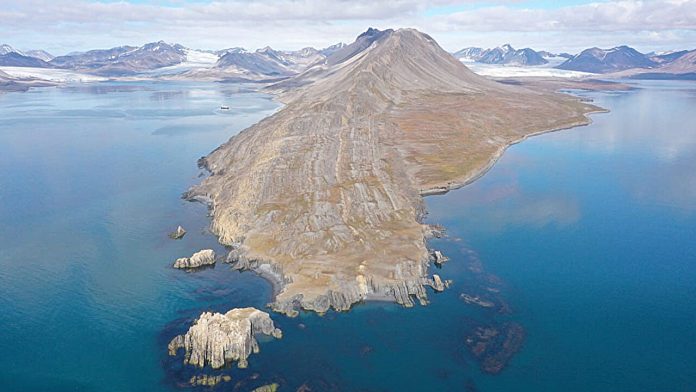
About 252 million years ago, Earth experienced the most devastating mass extinction in its history.
Known as “the Great Dying,” this event wiped out more than 80% of all marine species and caused massive changes to the planet’s climate and oceans.
Rising temperatures, shifts in ocean chemistry, and severe drops in oxygen levels made life nearly impossible in many parts of the world.
But new research suggests that not all ocean regions were equally deadly. Cooler waters in high-latitude areas—farther from the equator—may have acted as safe zones where some organisms were able to survive.
A team led by S. Z. Buchwald studied rock samples from Svalbard, a remote Arctic archipelago in Norway, and found evidence that certain microscopic algae may have flourished there soon after the extinction.
Their findings, published in AGU Advances, hint that these tiny organisms could have played an important role in keeping parts of the marine ecosystem alive.
The scientists collected 32 rock samples from both before and after the extinction event.
They compared these to samples from much warmer ancient environments in places like northern Italy, southern China, and Türkiye. These sites once surrounded the Tethys Ocean, a vast tropical sea that existed long before today’s continents took shape.
The team searched for specific molecular fossils—chemical traces left behind by long-dead organisms. Two of these markers, C33–n-alkylcyclohexane (C33–n-ACH) and phytanyl toluene, act like fingerprints of ancient phytoplankton, the tiny plant-like organisms that form the base of the ocean food chain.
In the Svalbard rocks formed after the extinction, levels of C33–n-ACH were 10 times higher than in older layers. Although older samples may have degraded over time, the researchers note that these molecules are highly resistant to breakdown. This means the dramatic rise likely reflects a true increase in the number of algae living in those cooler waters after the extinction.
Phytanyl toluene showed a similar jump in the post-extinction Arctic samples. Oddly, this molecule was not found in samples from warmer regions, suggesting it may have been produced by a different species of phytoplankton uniquely suited to cold conditions.
Together, these results reveal a clearer picture of life after the Great Dying. While warm, low-latitude oceans were too harsh to support much marine life, cooler high-latitude waters may have sheltered certain algae that continued to grow and produce food. These resilient phytoplankton could have helped stabilize the ecosystem and provided a vital energy source for the few surviving animals.
This study shows that even during Earth’s darkest moments, tiny organisms in the right environment may have kept life going until the planet eventually recovered.



